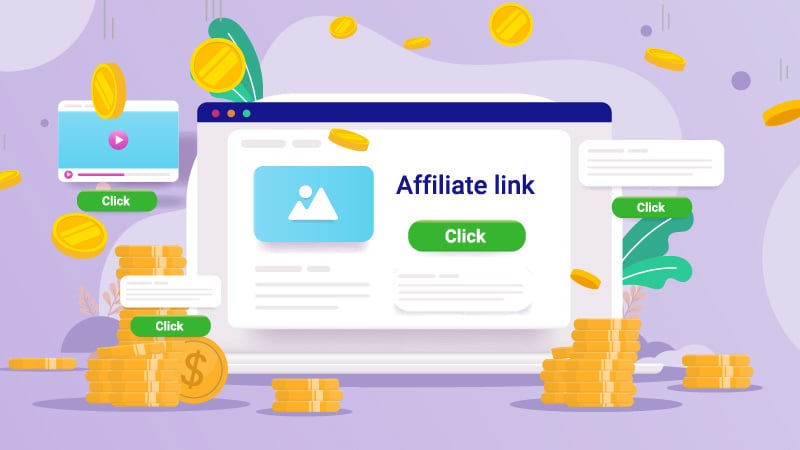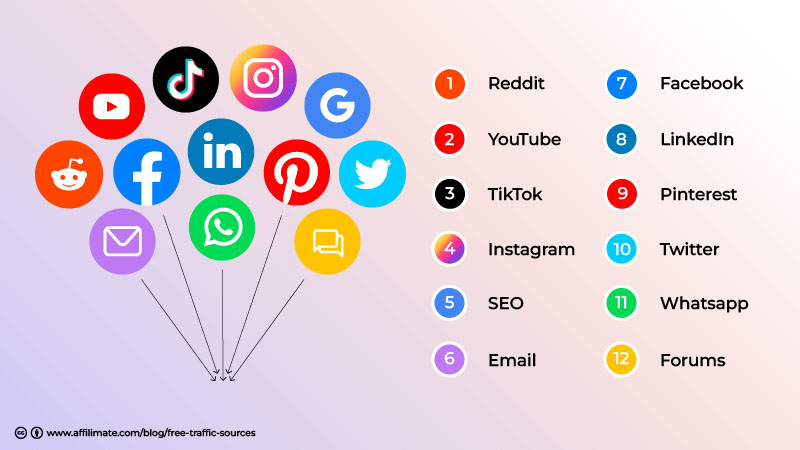
Are you looking to start an affiliate marketing business but need help figuring out where to begin? Don’t worry! This affiliate marketing for beginners guide will take you through the seven essential steps to ensure success. This cheat sheet will cover everything you need, from finding the right niche to building an audience and maximizing your income. Let’s get started.
What are the top two reasons why you should consider doing affiliate marketing?
Before you dive into affiliate marketing, you must first learn why you should start affiliate marketing. Or will it benefit you as an influencer or content creator?
1. Low-cost and low-risk
Starting a business can be risky and costly since there is an automatic cost for products, equipment, rent, shipment, and employees. But with affiliate marketing, all you need is a working website. If it doesn’t succeed, you’ve only wasted time and a little bit of money.
2. Flexible
Affiliate marketing can be done anywhere, making it a preferred choice by people who want to work from home or have a flexible schedule. This allows you to work on your terms and schedule, which can significantly benefit many people.
How Much Does an Affiliate Marketer Earn?

The amount an affiliate marketer earns can vary widely depending on several factors, such as their niche, the products or services they promote, and their level of experience and expertise.
Likewise, the commission rate offered by the affiliate program is an essential factor in determining revenue. Commission rates can range from a few percent to 50% or more of the sale price. Higher commission rates will generally result in higher profits for the affiliate.
PayScale says the average affiliate marketer earns between $3,000 and $6,000 per month. And the top 1% of earners can generate up to hundreds of thousands of dollars per month. They are full-time affiliate marketers with dedicated teams and several years of experience.
7-Step Guide to Affiliate Marketing for Beginners

Data Source: Affilimate
The most effective way to maximize your earning potential is by choosing the right niche—what type of audience you want to reach and the products they need to buy. Read on to learn how to start affiliate marketing the right way.
Step 1. Choose a niche based on research
Rushing to catch the latest trends can lead to conflicts when these fads end faster than they appear. Conducting niche research is the best way to ensure your affiliate business has high earning potential. And eventually, give you more money in the future.
Here are the steps in finding your niche:
- Start with your passion. These include your hobbies, connections, and areas of experience, so simply “your edge.”
- Know your competition. Identify your competitors, authority, and links, and find your unique selling point.
- Start niche keyword research. You can use free and paid tools for niche keyword research.
- Create a content plan. Plan 40-50 articles within the niche.
Step 2: Decide on a content platform.

You can affiliate marketing on any platform, including website, social media, newsletter, Youtube, and podcast. The method you choose depends on your preference and, sometimes, your niche’s preference. For instance, people who are learning K-pop dance will like videos. Maintaining a Youtube channel may be a better choice, even if you love writing.
Building a website and using search engine optimization (SEO) to rank high on Google is best. This allows us to consistently generate search traffic, which translates to consistent clicks on affiliate links.
Step 3: Find affiliate programs to join.
There are three affiliate programs to choose from:
- High-paying, low-volume. These are niche products with fewer buyers. For instance, HubSpot sells only to businesses, but their affiliate program pays well (100% of the first month and 15% monthly recurring commission.)
- Low-paying, high-volume. These are products with mass appeal, such as PS5 games. Amazon only pays up to 10% commission. But the good news is they offer commissions off the entire value of the purchase.
- High-paying, high-volume. Includes affiliate links for expensive products with mass appeal, like credit cards. However, these programs tend to attract affiliate marketers with deep expertise and eagerness to black-hat tactics.
Now the question is, which affiliate program should you join? It is highly dependent on your niche and level of expertise.
Step 4: Create great content
If you want your affiliate website to succeed, you need to publish high-quality content where your affiliate links fit naturally. Don’t just blindly promote or review products from Amazon’s best sellers. Take extra effort and ensure your content solves your readers’ issues or needs.
So if you’re doing reviews, you should purchase and test the product. Use it over a specific period and share your findings with your readers. Creating content for affiliate marketing is more than just adding links to an existing blog post. You must help your audience decide on a product or service through robust copywriting and appealing design.
Below are some examples of high-converting affiliate marketing content
- Product reviews
- Product roundups
- Comparisons
- Resource pages
- Tutorials
- eBooks
Step 5. Drive traffic to your affiliate site

Source: Affilimate
Now, it’s time to drive traffic to your carefully selected offer. This can be done through social media platforms, SEO blog posts, and email lists, but the most successful affiliates also invest in growing traffic through SEO.
Step 6. Build a simple affiliate marketing funnel
An affiliate marketing funnel guides users from the start of their buyer journey to the point where they repeat customers.
Funnels are critical if you must take an audience still waiting to buy and entice them to your brand and offer. The buyer’s journey consists of four main stages:
- Awareness: The prospect notices and identifies their problem
- Consideration: The prospect considers possible solutions to their problem
- Conversion: The candidate makes a purchase decision and thereby becomes a customer
- Loyalty: A positive customer experience leads to trust and repeat purchases
Using a funnel, the reader follows you through all the stages of the buyer’s journey, even if they join you weeks or months before they’re ready to purchase.
Step 7. Track and increase your affiliate revenue
Finally, it’s time to track your performance as an affiliate marketer. An accurate tracking method is an essential aspect of successful affiliate marketing. Giving yourself the idea of whether your strategies are working helps you make more money faster and with fewer pieces of content.
There are two types of affiliate tracking:
- Tracking a network does for you: attributing your sales and telling you which products people bought through your links)
- Tracking you have to do for yourself: figuring out which pages, affiliate links, text, and visual elements are converting.
Conclusion
You’ve learned a lot from our in-depth guide to affiliate marketing for beginners. And if you are ready to build your affiliate website, do it with Penji now! Penji offers flexible pricing packages that suit your graphic design needs. Sign up through this link to avail yourself of our 30-day money-back guarantee.
About the author

Rowena Zaballa
With a background as a former government employee specializing in urban planning, Rowena transitioned into the world of blogging and SEO content writing. As a passionate storyteller, she uses her expertise to craft engaging and informative content for various audiences.
Table of Contents
- What are the top two reasons why you should consider doing affiliate marketing?
- How Much Does an Affiliate Marketer Earn?
- 7-Step Guide to Affiliate Marketing for Beginners
- Step 1. Choose a niche based on research
- Step 2: Decide on a content platform.
- Step 3: Find affiliate programs to join.
- Step 4: Create great content
- Step 5. Drive traffic to your affiliate site
- Step 6. Build a simple affiliate marketing funnel
- Step 7. Track and increase your affiliate revenue
- Conclusion













